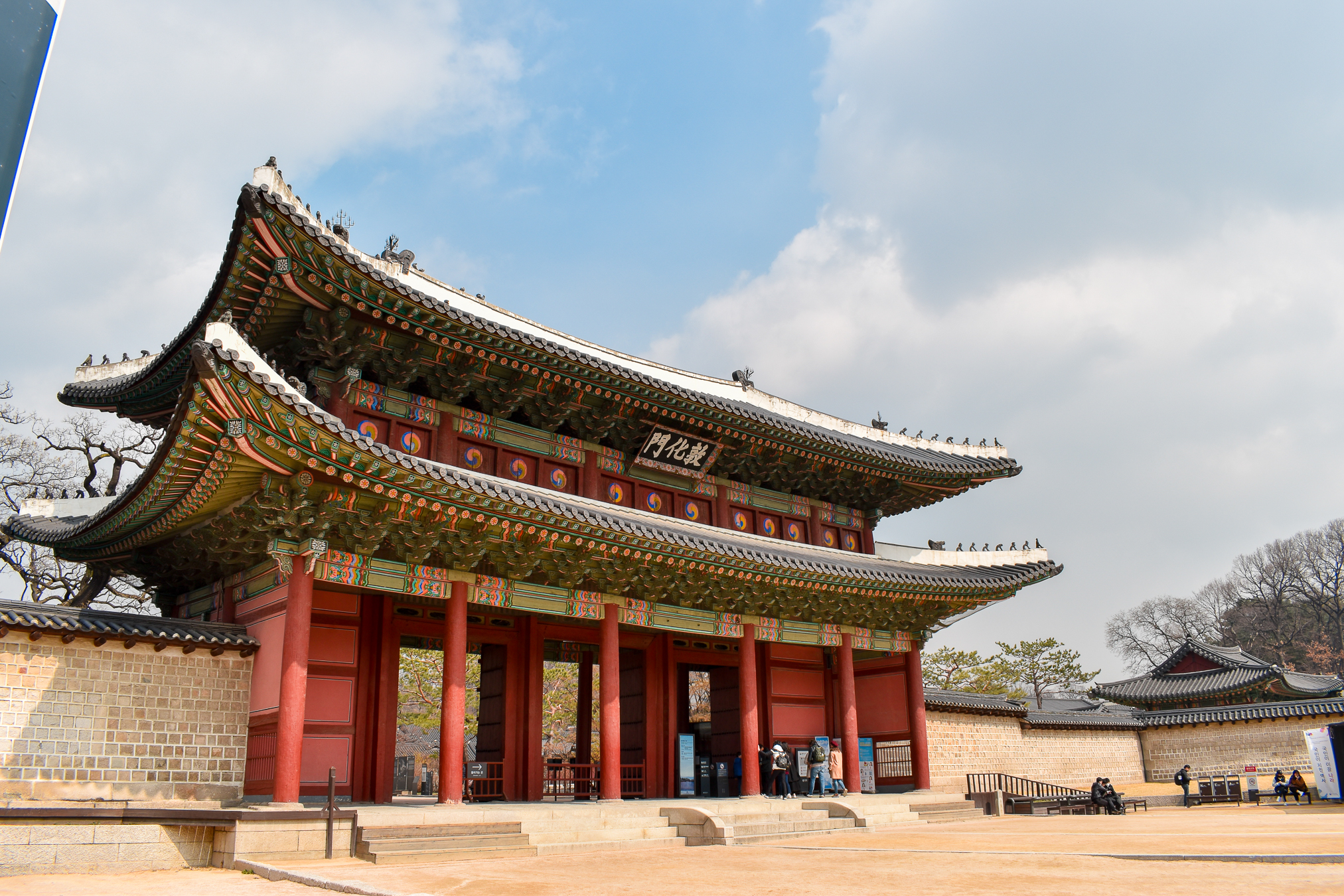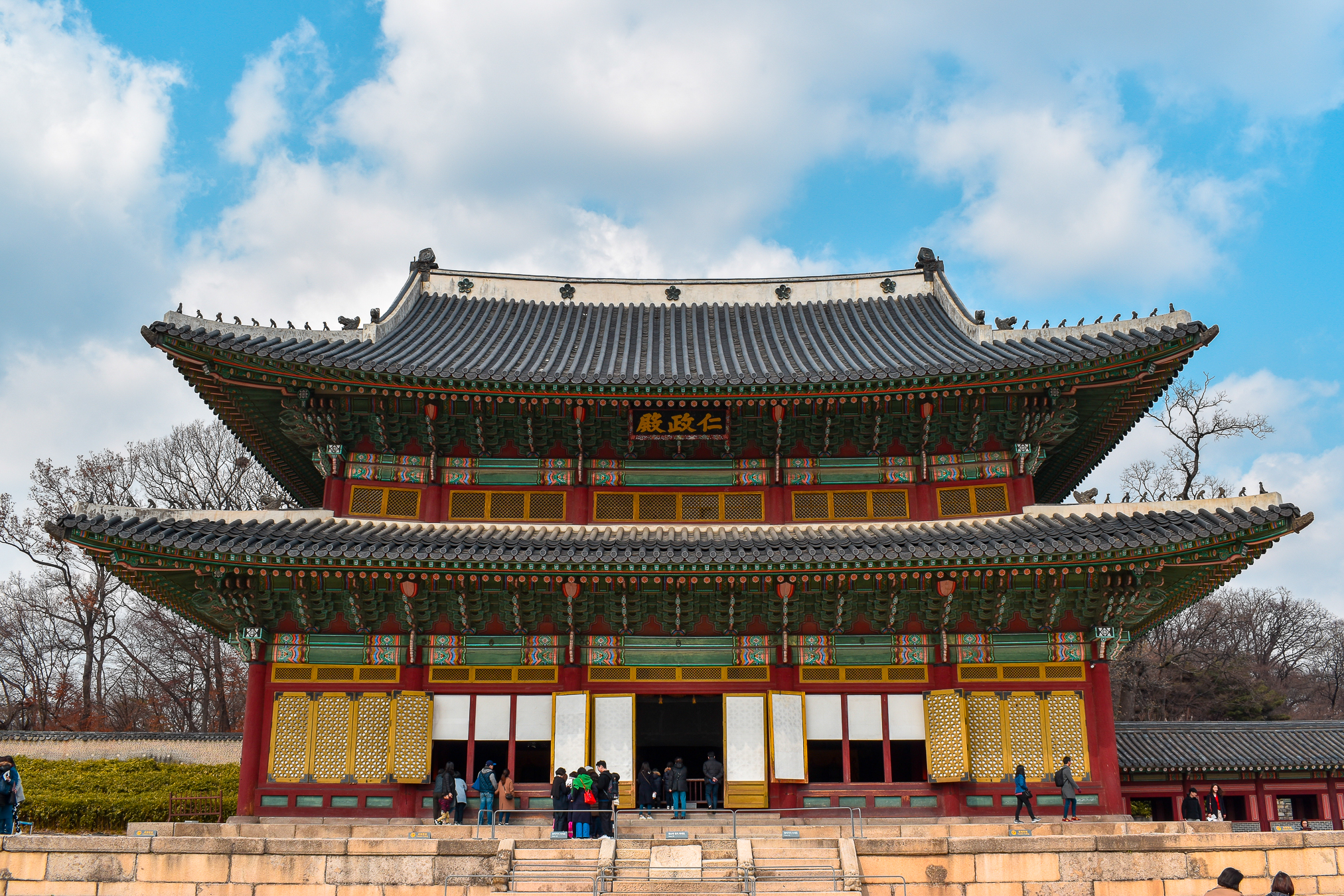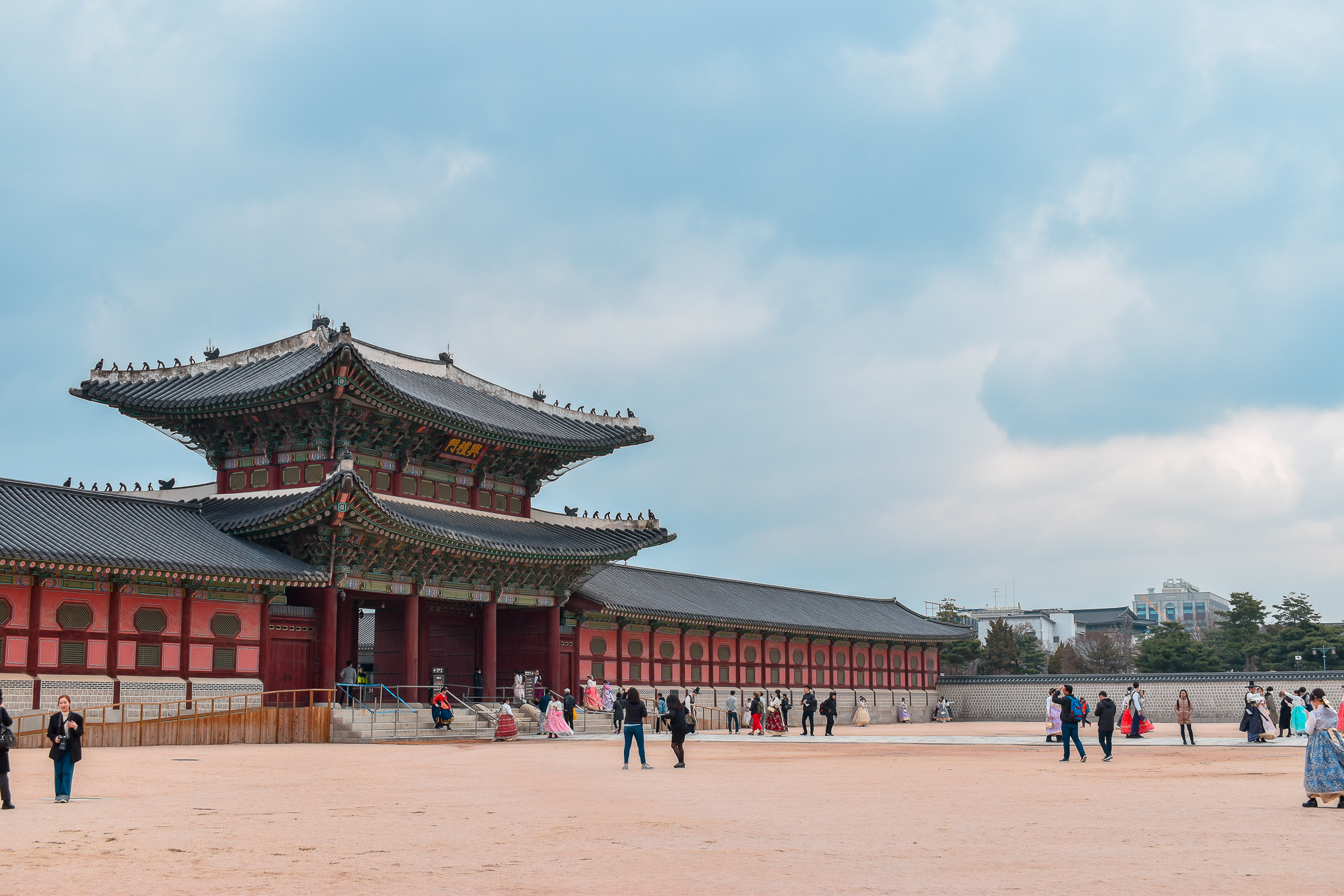- 한국어
- English
- 日本語
- 中文
- العربية
- Español
- Français
- Deutsch
- Pусский
- Tiếng Việt
- Indonesian
By Honorary Reporter Laura Lopez Velazquez from Mexico
Photos = Laura Lopez Velazquez
A major aspect of Korean culture is the traditional architecture at royal palaces in Seoul, which is why the capital is a leading destination for domestic and foreign visitors. To learn more about this, I visited three of the five palaces during my 2019 trip to Korea.
Among the three palaces, my favorite was Changdeokgung because it was the first one I visited and I had good interactions with the people there, though I don't speak Korean. They kindly showed me the way and took photos of me.
Changdeokgung Palace
The first palace I visited was Changdeokgung, whose name means "prospering virtue." Designated a UNESCO World Heritage Site in 1997, this palace is the best preserved of the five in Seoul.
The gates are meticulously decorated with dancheong, or traditional color patterns on wooden architecture and artifacts. The main gate is Donhwamun, the oldest surviving gate in the capital and sporting a double-roof pavilion.

Donhwamun Gate is the main entrance of Changdeokgung Palace.
The most visited room of a palace is the king's throne, or Injeongjeon at this palace, which hosted royal rituals and events. This venue is characterized by flower figures on top of the roof and blue tiles. And the halls, gardens, ponds and pavilions were each built according to the site's topography.

The most visited room at Changdeokgung Palace is Injeongjeon Hall.
Gyeongbokgung Palace
The second palace I visited was Gyeongbokgung, whose name means "palace greatly blessed by heaven" and was also known as "Northern Palace." Geunjeongjeon Hall is the main facility as shown by its two-tiered stone foundation to elevate the hall.

Geunjeongmun Gate of Gyeongbokgung Palace.
Deoksugung Palace
The final palace I visited was Deoksugung, the smallest of the five and whose name means "palace of virtuous longevity." Its location on one of the busiest streets in the city surrounded modern buildings creates a harmonious contrast between past and present.
Daehanmun Gate is the main entrance where a changing of the royal guard ceremony, a popular event for visitors, is held three times a day. Unlike the other four palaces, Deoksugung incorporates traditional elements of both Korean and Western architecture.
I also recommend visiting the palaces of Changgyeonggung and Gyeonghuigung as both also hold historical and cultural importance in Korea.
enny0611@korea.kr
*This article is written by a Korea.net Honorary Reporter. Our group of Honorary Reporters are from all around the world, and they share with Korea.net their love and passion for all things Korean.